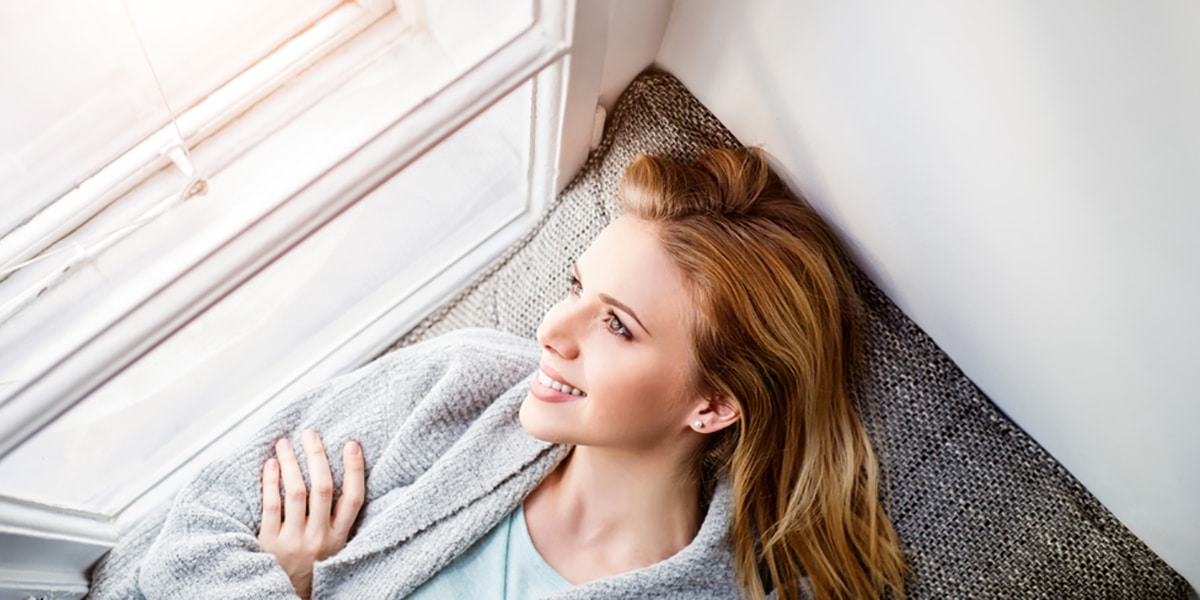The sun emits two types of radiation which are concerning to us, UVB, which causes sunburns, and UVA, which causes premature aging. Both types of radiation are associated with the formation of skin cancer¹, and exposing your skin to the sun means exposing yourself to these UV rays. Most of us know we should take sun safety precautions while outdoors, but is it necessary to do so while indoors, too? It’s a good idea to protect your skin from UV radiation, even if you plan to be indoors all day. Using a moisturizer with broad-spectrum protection is a good option.
While glass blocks out sunburn-causing UVB rays, it lets about 75% of premature aging-causing UVA rays through². Being exposed to sunlight shining through your window is not as dangerous as being exposed to sunlight while outdoors, but if you don’t protect your skin from the sun shining through your windows, you’re putting yourself at risk of developing premature wrinkles and skin spots. This is important to keep in mind not only while at home, but in the car, as well.
Besides sunlight, fluorescent light bulbs are another source of UV radiation in the home. The amount of UV radiation emitted by these light bulbs is very small. Still, using these light bulbs at distances closer than 1 foot for more than an hour per day could be dangerous. However, the bulbs are tested before being sold to make sure that they don’t emit an amount of UV radiation that is considered unsafe. If the bulbs emit more UV radiation than what is considered safe, they are packaged with a cautionary label³.
To protect your skin from UV radiation indoors, make sure to use a broad-spectrum sunscreen, or moisturizer with broad-spectrum protection. Most of the UV rays that you’re exposed to indoors are UVA rays, and these are only blocked by sunscreens labeled as broad-spectrum. To monitor the amount of UV radiation that reaches you indoors, use Sun Index. It will let you know the UV index in your exact location, and when and how to protect your skin.
Sources:
- Skin Cancer Foundation. (2013). UVA & UVB. Retrieved August 29, 2016
- Helmenstine, A. M. (2015). Does Glass Block UV Light? Retrieved August 29, 2016
- U.S. Food and Drug Administration. (2014). Compact Fluorescent Lamps (CFLs) – Fact Sheet/FAQ. Retrieved August 29, 2016



